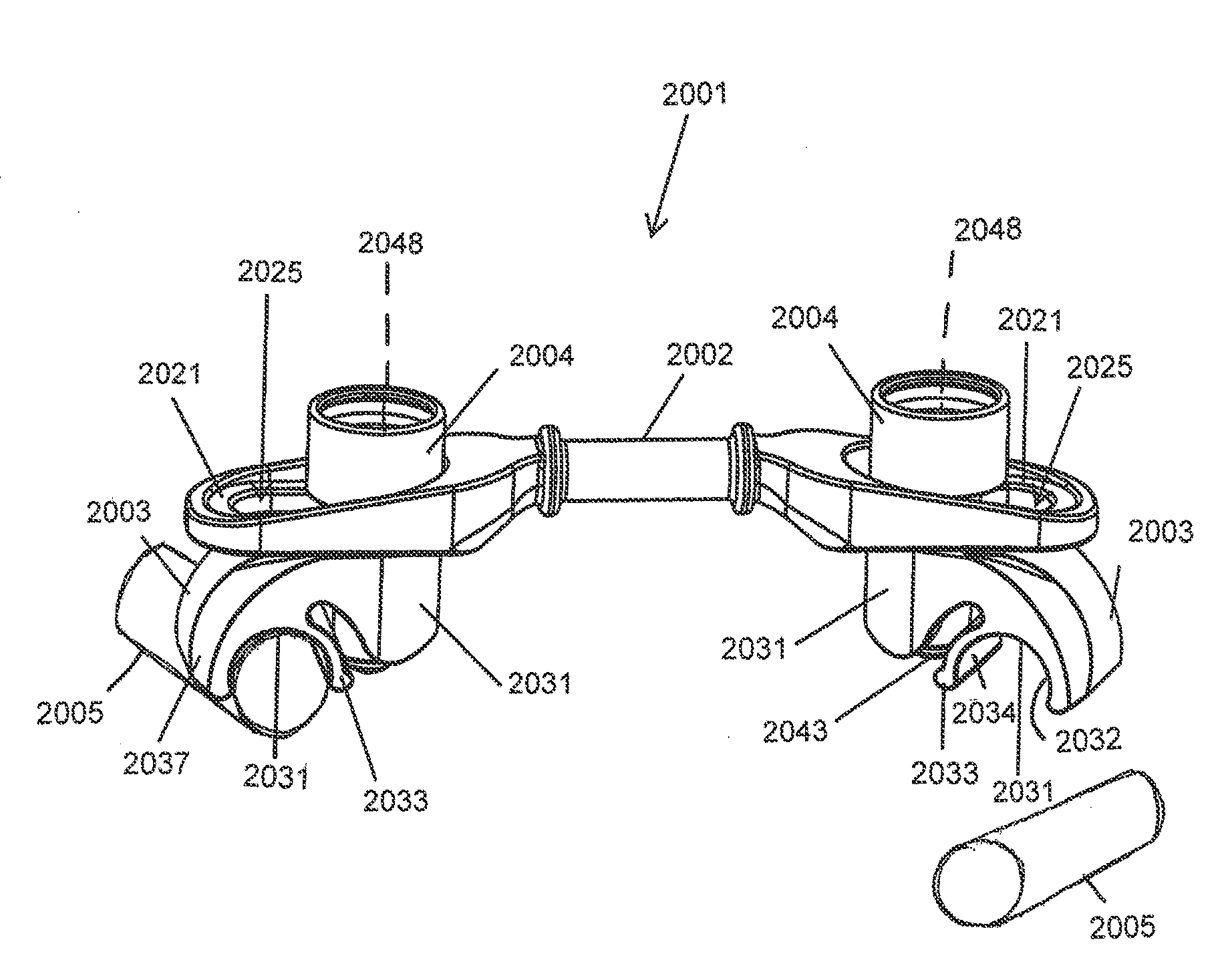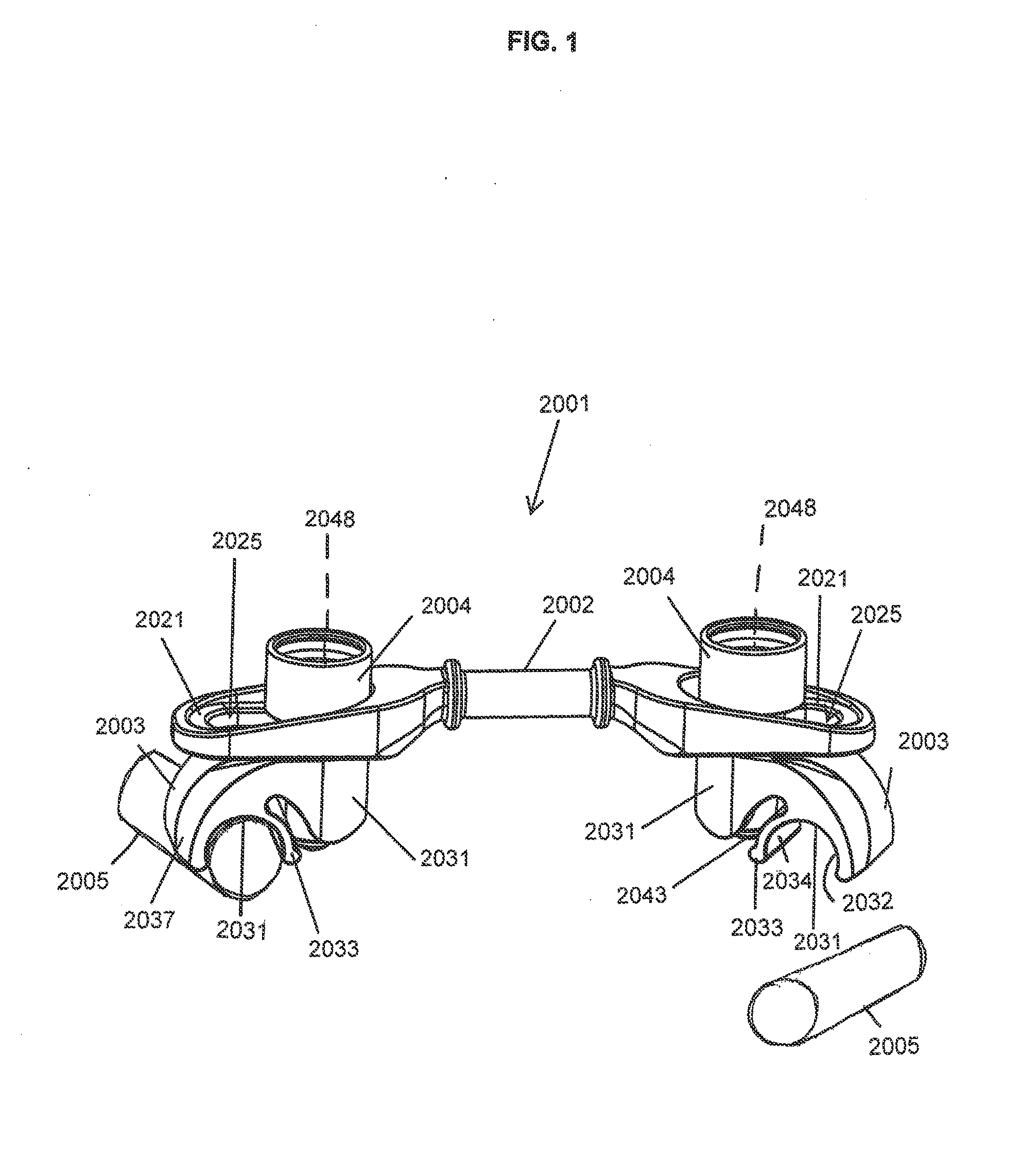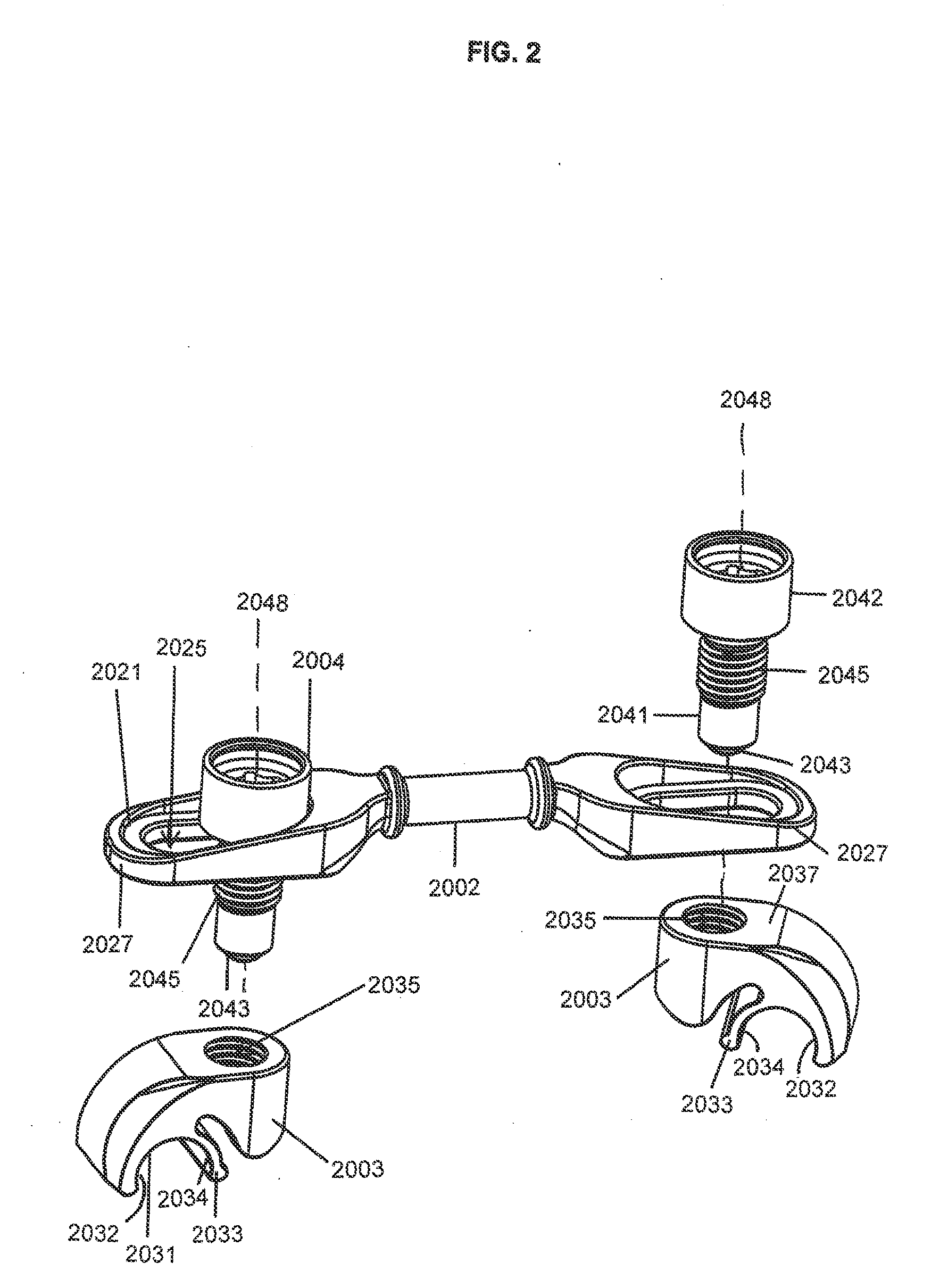Cross link for spinal rod system
a cross-linking and spinal cord technology, applied in the field of cross-linking or connecting assemblies, can solve the problems of difficult manipulation of the clamp body length, difficulty in reaching and lying close to the spinal cord when implanted, and difficulty in adjusting the length of the clamp body, so as to facilitate the capture of spinal cords, further adjustability to positioning, and the effect of convenient device adjustmen
- Summary
- Abstract
- Description
- Claims
- Application Information
AI Technical Summary
Benefits of technology
Problems solved by technology
Method used
Image
Examples
Embodiment Construction
[0094]FIGS. 1-4 show a cross connector device 2001 that includes a bridge member 2002 and two separate clamping members 2003 for coupling the device to a pair of spinal rods. The illustrated clamp members 2003 each include a body portion 2037 and a clamping jaw portion 2033, with the clamping jaw portion 2033 formed adjacent an arcuate recess 2031 for receiving and holding in place a spinal rod 2005. As illustrated, each clamp member 2003 is a unitary construct and the body portion 2037 and the clamping jaw portion 2003 have arcuate surface portions 2032 and 2034 which cooperate to form the arcuate recess 2031, with clamping jaw 2033 being a relatively thin flexible portion that is integral to the clamp body 2037. Alternatively, the jaw portion may be a separate member that is pivotable with respect to the clamp body 2037.
[0095]The clamping members 2003 are independently coupled to the central elongate bridge member 2002 by locking actuators 2004, which pass through elongate adjustm...
PUM
 Login to View More
Login to View More Abstract
Description
Claims
Application Information
 Login to View More
Login to View More - R&D
- Intellectual Property
- Life Sciences
- Materials
- Tech Scout
- Unparalleled Data Quality
- Higher Quality Content
- 60% Fewer Hallucinations
Browse by: Latest US Patents, China's latest patents, Technical Efficacy Thesaurus, Application Domain, Technology Topic, Popular Technical Reports.
© 2025 PatSnap. All rights reserved.Legal|Privacy policy|Modern Slavery Act Transparency Statement|Sitemap|About US| Contact US: help@patsnap.com



